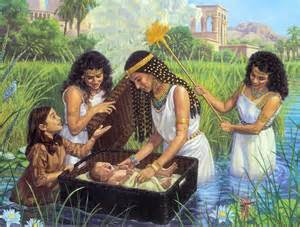WISE MOSES
(Message by Tanny Keng)
 0. Introduction
0. Introduction
a) The special description "wise" is used for 12 significant people in the Bible. They can be helpful models in our own pursuit of wisdom.
b) Here is one of them.
1. The person: Moses
a) Their role: Wise leader
b) Text reference: Acts 7:20-22
i) 20 At this time Moses was born, and was well pleasing to God; and he was brought up in his father’s house for three months. 21 But when he was set out, Pharaoh’s daughter took him away and brought him up as her own son. 22 And Moses was learned in all the wisdom of the Egyptians, and was mighty in words and deeds. (Acts 7:20-22 NKJV)
c) How they practiced wisdom
@1. Learned all the Egyptian wisdom, then graduated to God's lessons in wisdom to lead Israel out out of Egypt.
2. What is the text all about?
a) Who was Pharaoh's daughter? There are two popular explanations;
@1. Some think that Hatshepsut was the woman who pulled Moses from the river. Her husband was Pharaoh Thutmose 11. (This would match the earlier Exodus date.) Apparently Hatshepsut could not have children, so Thutmose had a son by another woman, and this son became heir to the throne. Hatshepsut would have considered Moses a gift from the gods because now she had her own son who would be the legal heir to the throne.
@2. Some think the princess who rescued baby Moses was the daughter of Rameses 11, an especially cruel Pharaoh who would have made life miserable for the Hebrew slaves. (This would also match the later Exodus date.)
b) Miriam, the baby's sister, saw that Pharaoh's daughter had discovered Moses. Quickly she took the initiative to suggest a nurse (her mother) who might care for the baby. The princess accepted Miriam's suggestion. Their family was reunited.
c) Moses grew up and learned all Egyptian wisdom.
d) He escaped punishment for killing the Egyptian by running away to Midian. He became a stranger in a strange land, separated from his home and family.
e) Later God called Moses to deliver the Israelites out of Egypt from bondage and slavery.
The End ...
 0. Introduction
0. Introductiona) The special description "wise" is used for 12 significant people in the Bible. They can be helpful models in our own pursuit of wisdom.
b) Here is one of them.
1. The person: Moses
a) Their role: Wise leader
b) Text reference: Acts 7:20-22
i) 20 At this time Moses was born, and was well pleasing to God; and he was brought up in his father’s house for three months. 21 But when he was set out, Pharaoh’s daughter took him away and brought him up as her own son. 22 And Moses was learned in all the wisdom of the Egyptians, and was mighty in words and deeds. (Acts 7:20-22 NKJV)
c) How they practiced wisdom
@1. Learned all the Egyptian wisdom, then graduated to God's lessons in wisdom to lead Israel out out of Egypt.
2. What is the text all about?
a) Who was Pharaoh's daughter? There are two popular explanations;
@1. Some think that Hatshepsut was the woman who pulled Moses from the river. Her husband was Pharaoh Thutmose 11. (This would match the earlier Exodus date.) Apparently Hatshepsut could not have children, so Thutmose had a son by another woman, and this son became heir to the throne. Hatshepsut would have considered Moses a gift from the gods because now she had her own son who would be the legal heir to the throne.
@2. Some think the princess who rescued baby Moses was the daughter of Rameses 11, an especially cruel Pharaoh who would have made life miserable for the Hebrew slaves. (This would also match the later Exodus date.)
b) Miriam, the baby's sister, saw that Pharaoh's daughter had discovered Moses. Quickly she took the initiative to suggest a nurse (her mother) who might care for the baby. The princess accepted Miriam's suggestion. Their family was reunited.
c) Moses grew up and learned all Egyptian wisdom.
d) He escaped punishment for killing the Egyptian by running away to Midian. He became a stranger in a strange land, separated from his home and family.
e) Later God called Moses to deliver the Israelites out of Egypt from bondage and slavery.
The End ...
Comments
Post a Comment